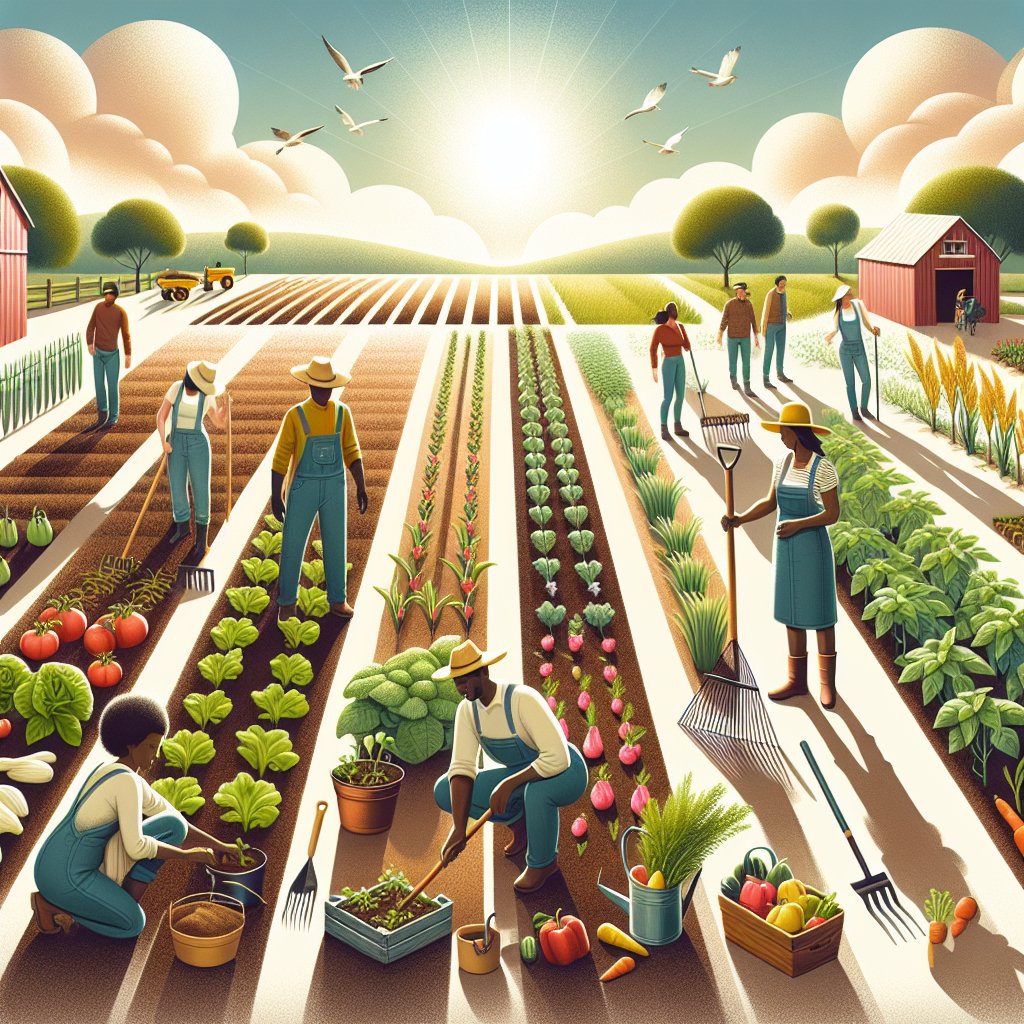
Growing rice in waterlogged soil conditions presents unique challenges and opportunities for farmers. Rice, being a semi-aquatic plant, is well-suited to thrive in such environments, but optimizing growth and yield requires careful management and understanding of the specific conditions. This article explores effective strategies and tips for cultivating rice in waterlogged soils, focusing on soil preparation, water management, and pest control.
Understanding Waterlogged Soil Conditions
Waterlogged soils are characterized by excessive moisture content, often resulting from poor drainage, heavy rainfall, or irrigation practices. These conditions can lead to reduced oxygen availability for plant roots, affecting nutrient uptake and overall plant health. However, rice is uniquely adapted to these environments due to its ability to grow in flooded conditions, which can suppress weed growth and reduce pest pressure.
To successfully grow rice in waterlogged soils, it is crucial to understand the soil’s physical and chemical properties. Soil texture, structure, and organic matter content play significant roles in determining how well the soil can support rice cultivation. Farmers should conduct soil tests to assess pH levels, nutrient availability, and potential toxicities, such as iron or manganese, which can be prevalent in waterlogged conditions.
Soil Preparation and Management
Proper soil preparation is essential for maximizing rice yield in waterlogged conditions. The first step is to ensure that the field is level, which helps maintain uniform water distribution and prevents areas of excessive water accumulation. Laser leveling technology can be employed to achieve precise leveling, improving water management and reducing labor costs.
Incorporating organic matter into the soil can enhance its structure and fertility. Organic amendments, such as compost or green manure, improve soil aeration and water retention, providing a more favorable environment for rice roots. Additionally, organic matter can increase microbial activity, promoting nutrient cycling and availability.
Farmers should also consider the timing of soil preparation activities. Plowing and harrowing should be done when the soil is at the right moisture content to avoid compaction, which can exacerbate waterlogging issues. In some cases, raised beds or ridges may be constructed to improve drainage and root aeration.
Water Management Techniques
Effective water management is critical for rice cultivation in waterlogged soils. Maintaining the right water depth is essential to support rice growth while minimizing weed competition and pest infestations. The ideal water depth varies depending on the rice growth stage, with shallow flooding during the early stages and deeper water during the reproductive phase.
Farmers can employ alternate wetting and drying (AWD) techniques to optimize water use and improve soil aeration. AWD involves allowing the field to dry out periodically before re-flooding, which can enhance root development and reduce methane emissions. This practice requires careful monitoring of soil moisture levels to ensure that the rice plants do not experience water stress.
Drainage systems, such as ditches or subsurface drains, can be installed to manage excess water and prevent prolonged waterlogging. These systems help maintain optimal water levels and reduce the risk of root diseases caused by anaerobic conditions.
Pest and Disease Management
Waterlogged conditions can influence the prevalence of pests and diseases in rice fields. While flooding can suppress some weeds and pests, it can also create favorable conditions for others, such as rice blast or bacterial leaf blight. Integrated pest management (IPM) strategies are essential to minimize crop losses and ensure sustainable rice production.
IPM involves a combination of cultural, biological, and chemical control methods. Cultural practices, such as crop rotation and field sanitation, can reduce pest and disease pressure. Biological control agents, such as beneficial insects or microbial inoculants, can be introduced to target specific pests without harming the environment.
When chemical control is necessary, farmers should select pesticides that are effective against the target pest while minimizing harm to non-target organisms and the environment. Proper application timing and dosage are crucial to avoid resistance development and ensure the safety of farm workers and consumers.
Conclusion
Growing rice in waterlogged soil conditions requires a comprehensive understanding of soil properties, water management, and pest control strategies. By implementing effective soil preparation techniques, optimizing water use, and adopting integrated pest management practices, farmers can enhance rice yield and sustainability. As climate change continues to impact agricultural systems, adapting to waterlogged conditions will be increasingly important for ensuring food security and resilience in rice-producing regions.

